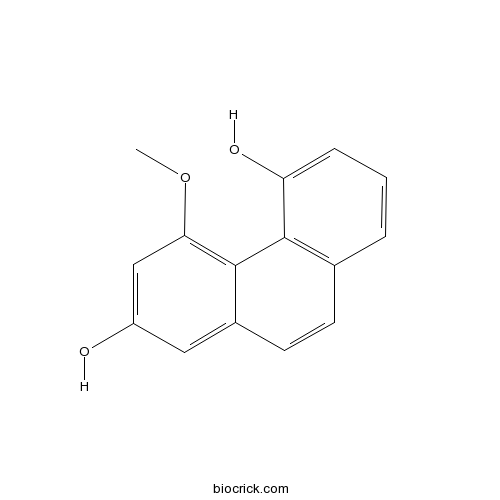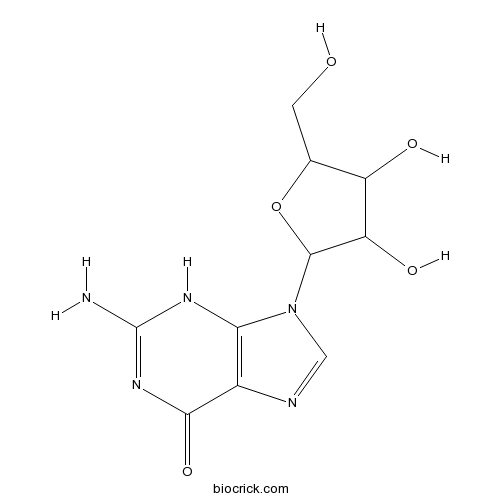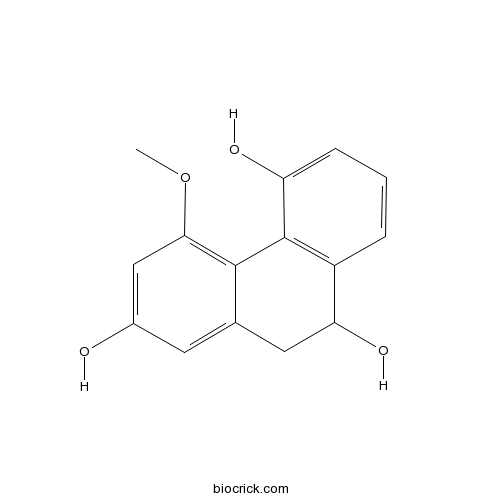Dendrobium denneanum
Dendrobium denneanum
1. The products in our compound library are selected from thousands of unique natural products; 2. It has the characteristics of diverse structure, diverse sources and wide coverage of activities; 3. Provide information on the activity of products from major journals, patents and research reports around the world, providing theoretical direction and research basis for further research and screening; 4. Free combination according to the type, source, target and disease of natural product; 5. The compound powder is placed in a covered tube and then discharged into a 10 x 10 cryostat; 6. Transport in ice pack or dry ice pack. Please store it at -20 °C as soon as possible after receiving the product, and use it as soon as possible after opening.
Natural products/compounds from Dendrobium denneanum
- Cat.No. Product Name CAS Number COA
-
BCN8670
Moscatin108335-06-4
Instructions

-
BCN2962
Guanosine118-00-3
Instructions

-
BCN7856
Rotundatin144506-16-1
Instructions

-
BCN4213
N-trans-Feruloyltyramine66648-43-9
Instructions

Anti-inflammatory phenanthrene derivatives from stems of Dendrobium denneanum.[Pubmed: 24042064]
Cultivated Dendrobium denneanum has been substituted for other endangered Dendrobium species in recent years, but there have been few studies regarding either its chemical constituents or pharmacological effects. In this study, three phenanthrene glycosides, three 9,10-dihydrophenanthrenes, two 9,10-dihydrophenanthrenes glycosides, and four known phenanthrene derivatives, were isolated from the stems of D. denneanum. Their structures were elucidated on the basis of MS and NMR spectroscopic data. Ten compounds were found to inhibit nitric oxide (NO) production in lipopolysaccharide (LPS)-activated mouse macrophage RAW264.7 cells with IC50 values of 0.7-41.5 μM, and exhibited no cytotoxicity in RAW264.7, HeLa, or HepG2 cells. Additionally, it was found that 2,5-dihydroxy-4-methoxy-phenanthrene 2-O-β-d-glucopyranoside, and 5-methoxy-2,4,7,9S-tetrahydroxy-9,10-dihydrophenanthrene suppressed LPS-induced expression of inducible NO synthase (iNOS) inhibited phosphorylation of p38, JNK as well as mitogen-activated protein kinase (MAPK), and inhibitory kappa B-α (IκBα). This indicated that both compounds exert anti-inflammatory effects by inhibiting MAPKs and nuclear factor κB (NF-κB) pathways.
In vitro and in vivo antioxidant activity of a water-soluble polysaccharide from Dendrobium denneanum.[Pubmed: 21321529]
The water-soluble crude polysaccharide (DDP) obtained from the aqueous extracts of the stem of Dendrobium denneanum through hot water extraction followed by ethanol precipitation, was found to have an average molecular weight (Mw) of about 484.7 kDa. Monosaccharide analysis revealed that DDP was composed of arabinose, xylose, mannose, glucose and galactose in a molar ratio of 1.00:2.66:8.92:34.20:10.16. The investigation of antioxidant activity both in vitro and in vivo showed that DDP is a potential antioxidant.
[Comparative analysis of agronomic and qualitative characters in different lines of Dendrobium denneanum].[Pubmed: 21046745]
To provide theoretical basis for breeding good variety of Dendrobium denneanum, agronomic and qualitative characters of 4 different lines and relationships among them were studied. The stem length, stem diameter, leaf length, leaf width, length/ width ratio and leaf area were measured. The single fresh and dry stem was weighed and drying rate was calculated. The contents of polysaccharides and total alkaloids were determined by sulfuric acid-phenol colorimetry and acid-dye colorimetry, respectively. The correlations between characters were analyzed. The results showed that differences in major agronomic characters between four lines were significant. The plant types of dq-1 and dq-2 were higher, dq-3 was medium and dq-4 was lower. The fresh weigh of stem and content of polysaccharides were the highest in dq-2, 7.81 g and 14.33%. While the highest content of total alkaloids and was 0. 486% in dq-3. There were significant correlations between agronomic characters, but these characters had low or non correlations with qualitative characters such as polysaccharides and total alkaloids. It was shown that the content of polysaccharides and total alkaloids were significantly different among 4 lines of D. denneanum, which could be selected for different uses.
Composition analysis and antioxidant activity of polysaccharide from Dendrobium denneanum.[Pubmed: 19414030]
Three polysaccharide fractions (DDP1-1, DDP2-1 and DDP3-1) were successfully purified from the crude polysaccharide of Dendrobium denneanum by DEAE-Cellulose and Sephadex G-200 column chromatography. The average molecular weights (Mws) of these fractions were 51.5, 26.1 and 6.95 kDa, respectively. Monosaccharide components analysis indicated that DDP1-1 and DDP2-1 were composed of arabinose, xylose, mannose, glucose and galactose in a molar ratio of 1.00:2.82:57.11:140.82:7.76 and 1.00:1.62:1.18:77.5:7.79. DDP3-1 was composed of arabinose, mannose, glucose and galactose in a molar ratio of 1.00:1.03:8.84:2.00. On the basis of antioxidant test in vitro, DDP2-1 exhibited the highest antioxidant ability among these samples.


